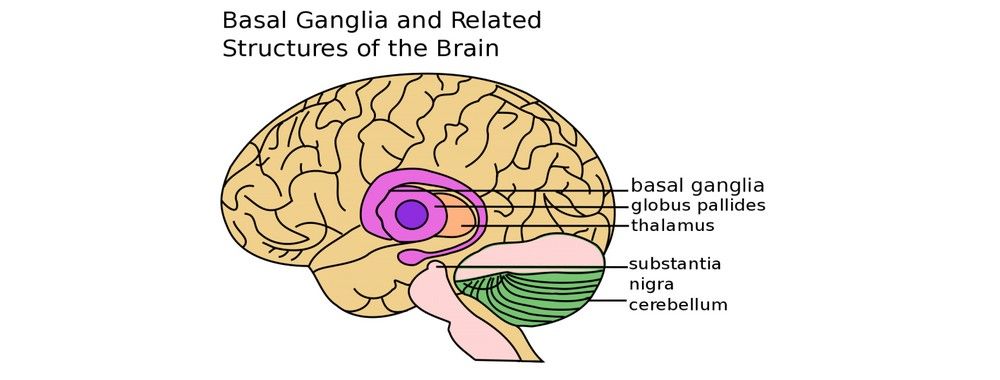A common space for harmonic peacemakers

Our Three Brains - The Reptilian Brain
Neuroscience has offered many important insights into both the structure and function of the human brain. One of the most well-known models of brain structure, and how it relates to function, was provided by neuroscientist Paul MacLean, whose 'Triune Brain' model is based on three dominant structures in the human brain. These three structures are often referred to as separate 'brains', due to the, now redundant, belief that they operate independently (while in fact they are simultaneously active in all circumstances). Those who subscribed to the triune brain model believed that the three major brain structures developed sequentially. First of all, the basal ganglia (found at the center of the human brain) was 'acquired', followed by the limbic system (which consists of various component brain structures, such as the amygdala and hippocampus), then the neocortex (which is implicated in conscious thought, language and reasoning). Here, we are concerned with the function of our reptilian brain and what it means for UX designers.
The Reptilian or Primal Brain
In MacLean's triune brain model, the basal ganglia are referred to as the reptilian or primal brain, as this structure is in control of our innate and automatic self-preserving behavior patterns, which ensure our survival and that of our species. The primal brain is also in charge of, what are often referred to as, the four Fs: Feeding, Fighting, Fleeing, and… Reproduction (well, we won’t use that other f-word here!). Notable behavior patterns include defense of self, family, and personal property, physical communication, and socially approved actions, such as handshakes, head nods, and bowing.
Origins of the 'Reptilian Complex'
The term, 'reptilian brain' (or 'reptilian complex') is derived from a longstanding belief within the field of neuroanatomy that the forebrains of reptiles, and other small animals, were dominated by these structures. Paul MacLean suggested, within the Triune brain model, that the basal ganglia and a number of the surrounding structures within the base of the forebrain are responsible for 'species-typical' behaviors, which are present in aggression, dominance, territoriality, and ritual displays.
The primal brain in the modern world
“It took millions of years for man's instincts to develop. It will take millions more for them to even vary. It is fashionable to talk about changing man. A communicator must be concerned with unchanging man, with his obsessive drive to survive, to be admired, to succeed, to love, to take care of his own.”
— William Bernbach (1911–1982), American advertising creative director
We might not be living in the same world as primitive man, but we are still met with threatening and potentially dangerous situations. The brainstem is responsible for keeping us safe now, as it was for early man. The health and functioning of this brain region largely determines our ability to detect and respond to threats. At the most basic level, the brainstem helps us identify familiar and unfamiliar things. Familiar things are usually seen as safe and preferable, while unfamiliar things are treated with suspicion until we have assessed them and the context in which they appear. For this reason, designers, advertisers, and anyone else involved in selling products tend to use familiarity as a means of evoking positive emotions.
Familiarity is dependent upon geography and culture; global brands must show an understanding of and sensitivity to the people of that particular country or region and their culture. Transposing a product and its related branding, promotional material etc. to another country/region/state without alteration can often result in the new audience rejecting or simply failing to show an interest in the product. Rory Sutherland, vice-chairman of the Ogilvy & Mather Group (UK), stated – in a TED talk on influence – that designers and advertisers must harness the power of making new things seem familiar, and of making the things already familiar to consumers/users seem new (Nahai, 2012). Re-branding existing products can refresh the users’ views, attitudes, and connections. Once things seem familiar, they are viewed as safe, and while we may have positive attitudes and connections with a product, re-branding or 're-familiarizing' can trigger new responses and enhance the connection. Therefore, familiarity is something we must consider when we are not only introducing new products but also making changes to existing products, brands, and promotional materials.
The Take Away
Neuroscientist Paul MacLean conceived the 'Triune Brain' model in which three major brain structures are thought to be in control of three major aspects of human thought and behavior. One of these brain structures is referred to as the 'Pre-reptilian' or primal brain, as it is in charge of our basic, primal drives, such as self-preservation, preservation of family, and reproduction. One of the major functions of the primal brain is to help us distinguish between threatening and non-threatening stimuli. At its most basic form, this function is represented in our ability to distinguish between familiar objects, things, people, scenarios, etc. and unfamiliar objects, etc. immediately. Designing according to the primal brain can encompass all of the basic drives we have, but one of the most effective ways of targeting the primal brain is to make new things seem familiar.
Replies to This Discussion
-
excellentttttt
-
-
I am glad you liked it, Maria Angelica!
-
© 2025 Created by Eva Libre.
Powered by
![]()